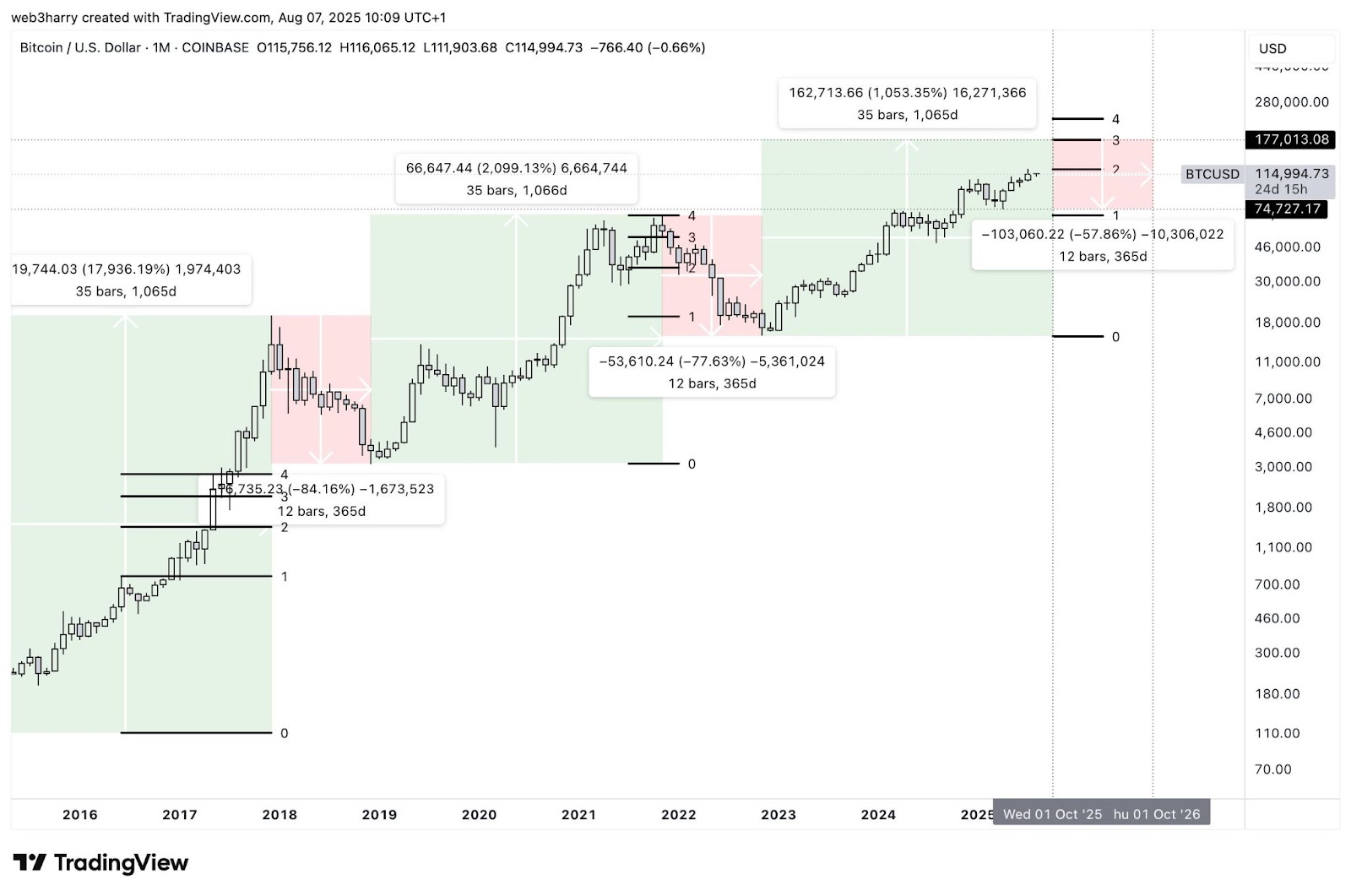Experts are questioning whether Bitcoin’s predictable four-year cycles are ending due to increased institutional investment and changing market dynamics.
-
Bitcoin’s four-year cycles may be unraveling, according to industry analysts.
-
Top 100 Bitcoin treasury companies now hold nearly 1 million Bitcoin, impacting market behavior.
-
Experts suggest macroeconomic factors and institutional flows are becoming key market drivers.
Experts debate the future of Bitcoin’s four-year cycles as institutional investment rises, suggesting a potential shift in market dynamics.
| Year | Bitcoin Price Peak | Halving Event |
|---|---|---|
| 2013 | $1,150 | Yes |
| 2017 | $19,783 | Yes |
| 2021 | $64,000 | Yes |
| 2025 (Projected) | To Be Determined | Yes |
What is the Future of Bitcoin’s Four-Year Cycle?
The debate surrounding Bitcoin’s four-year cycle is intensifying. Industry experts suggest that the traditional cycle may be coming to an end due to significant institutional investment. Bitcoin’s price movements have historically aligned with halving events, but changing market conditions could alter this pattern.
How Are Institutions Impacting Bitcoin’s Market Dynamics?
Institutional investments are reshaping the landscape of Bitcoin trading. With 95% of Bitcoin already mined, the supply dynamics are shifting. Experts like Pierre Rochard argue that halvings are becoming less relevant to trading behavior, as demand now stems from various sources, including retail and treasury companies.

Are Four-Year Cycles Still Relevant?
While some analysts believe the four-year cycle is losing its significance, others argue it remains a crucial framework. Crypto analyst ‘CRYPTO₿IRB’ contends that traditional finance’s four-year cycles still influence Bitcoin’s market behavior, especially with the rise of ETFs.
What Do Experts Say About Future Market Trends?
Experts like Matthew Hougan from Bitwise Asset Management suggest that while the four-year cycle may not be the sole driver, it still holds relevance. As the market matures, various factors, including macroeconomic conditions and regulatory developments, are becoming increasingly influential.
Frequently Asked Questions
What are Bitcoin halving events?
Bitcoin halving events occur approximately every four years, reducing the reward for mining new blocks by half, which historically impacts Bitcoin’s price.
How do institutional investments affect Bitcoin?
Institutional investments can stabilize Bitcoin’s price and influence market trends, as large entities bring significant capital and credibility to the cryptocurrency space.
Key Takeaways
- Changing Market Dynamics: Institutional investments may be altering the traditional four-year cycle.
- Macro Influences: Factors like regulatory changes and economic conditions are becoming increasingly important.
- Future Outlook: The relevance of the four-year cycle remains debated among experts.
Conclusion
The future of Bitcoin’s four-year cycle is uncertain, with experts divided on its relevance. As institutional investment grows and market conditions evolve, the dynamics of Bitcoin trading may shift significantly. Understanding these changes will be crucial for investors moving forward.
